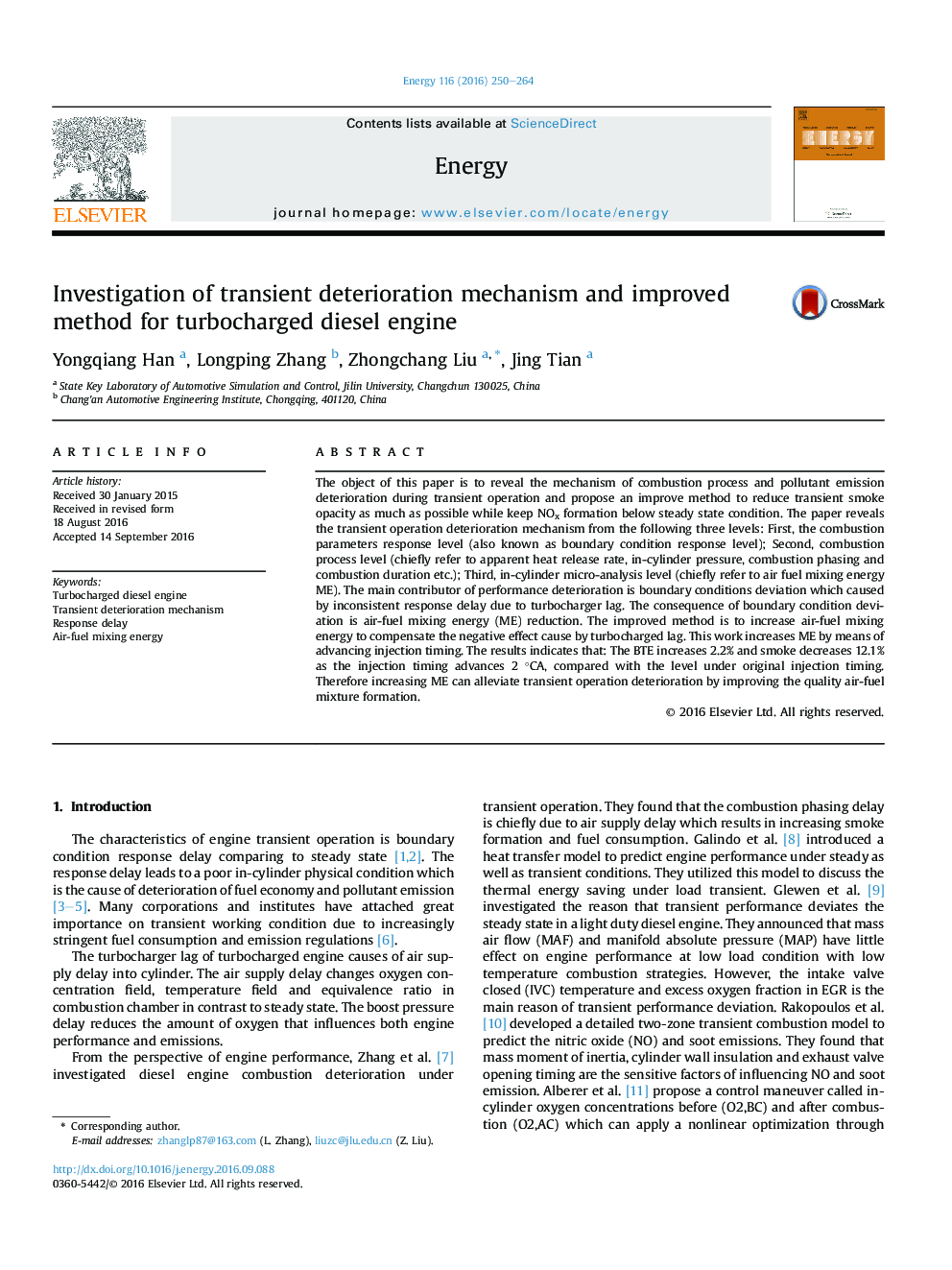| Article ID | Journal | Published Year | Pages | File Type |
|---|---|---|---|---|
| 5477285 | Energy | 2016 | 15 Pages |
Abstract
The object of this paper is to reveal the mechanism of combustion process and pollutant emission deterioration during transient operation and propose an improve method to reduce transient smoke opacity as much as possible while keep NOx formation below steady state condition. The paper reveals the transient operation deterioration mechanism from the following three levels: First, the combustion parameters response level (also known as boundary condition response level); Second, combustion process level (chiefly refer to apparent heat release rate, in-cylinder pressure, combustion phasing and combustion duration etc.); Third, in-cylinder micro-analysis level (chiefly refer to air fuel mixing energy ME). The main contributor of performance deterioration is boundary conditions deviation which caused by inconsistent response delay due to turbocharger lag. The consequence of boundary condition deviation is air-fuel mixing energy (ME) reduction. The improved method is to increase air-fuel mixing energy to compensate the negative effect cause by turbocharged lag. This work increases ME by means of advancing injection timing. The results indicates that: The BTE increases 2.2% and smoke decreases 12.1% as the injection timing advances 2 °CA, compared with the level under original injection timing. Therefore increasing ME can alleviate transient operation deterioration by improving the quality air-fuel mixture formation.
Related Topics
Physical Sciences and Engineering
Energy
Energy (General)
Authors
Yongqiang Han, Longping Zhang, Zhongchang Liu, Jing Tian,
